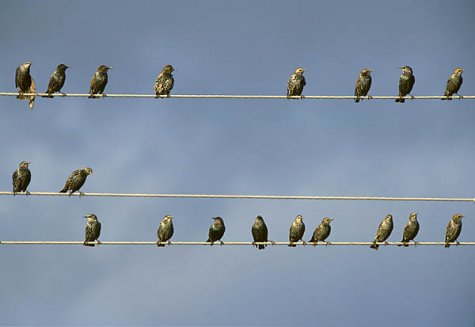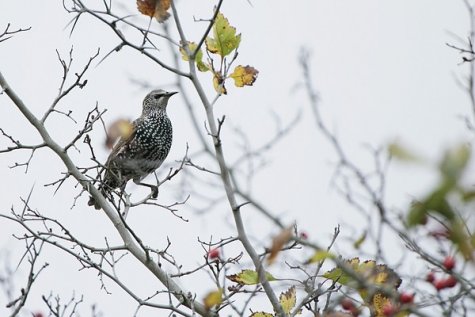Migrant autumn
Photos: Arne Ader
Translation: Liis
Starling flock on power line
| Starling | Kuldnokk |
The starlings from North and North-East pass through Estonia until December, or until a permanent snow cover arrives. Starlings are mostly daytime migrants. They set out on the autumn migration from the breeding areas in good time, moving by stages towards the wintering areas with frequent stops – all depending on food availability, weather and other factors. Winter quarters are the Netherlands, Belgium, UK, Ireland ... and each year a small starling group stays to winter in Estonia.
The winter plumage of starlings shows nicely on the photo: the number of bright spots has increased and their size has grown. A noticeable difference between females and males is the eye area and the colour of the beak. The iris of the female is surrounded by a pale circle but it is uniformly dark for the male bird. The base of the female bird’s beak is pinkish or yellowish-white, that of the male bird has a blue tinge. A constant detail is the pink colour of the feet.
Starling in hawthorn
Try to determine, as a test, the sex of the starling in the photo.
The starlings are fast fliers and in general this does not favour a long life; so the average lifetime stays at a couple of years. In flight speed they compete with swallows, reaching up to 75 km/h.










